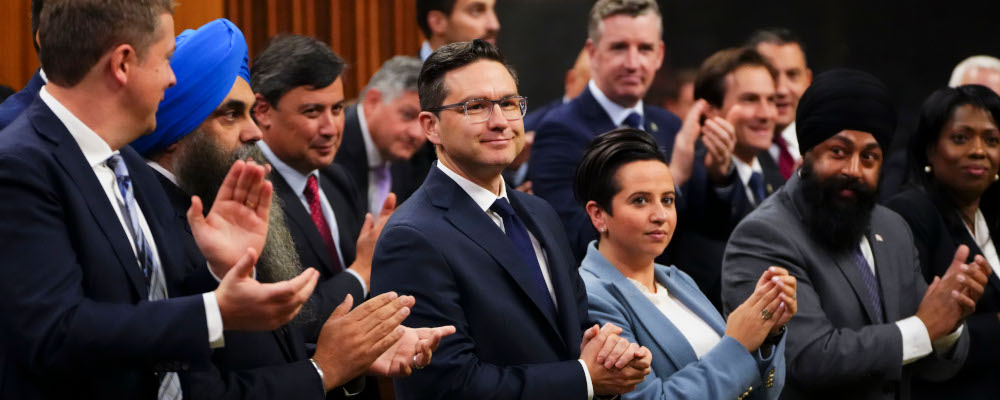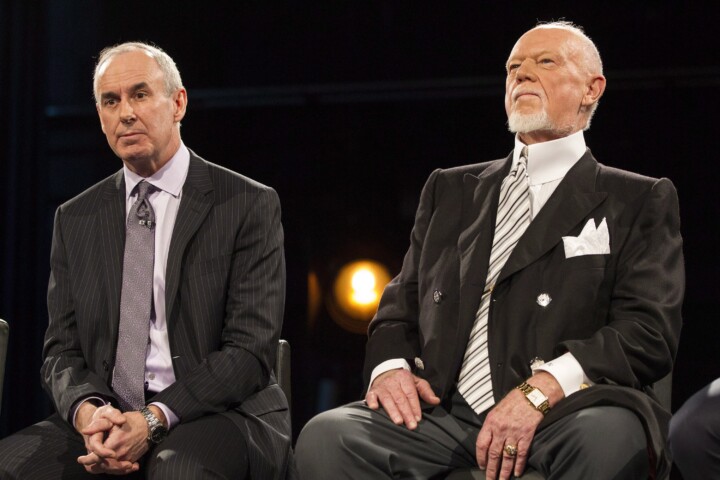As part of The Hub’s coverage of last year’s Conservative Party leadership race and its underlying political ideas, Hub contributor Ben Woodfinden wrote an excellent essay about the main cultural and intellectual trends inherent in Canadian conservatism.
One of Woodfinden’s key arguments is that while conservatism as a political programme subscribes to some immutable principles (namely, a realism about the world and a deference to tradition), the application of these principles is highly contingent rather than universal. As he puts it: “conservatism will look different in different places.”
This conception of conservatism accords with historian Samuel Huntington’s famous observation that a Saudi Arabian conservative is seeking to conserve something different from a European conservative or a North American one.
But Huntington and Woodfinden’s view of conservatism as “inherently tied up in context and circumstance” can be overstated. Woodfinden’s argument for instance that “there is no true conservativism tradition” may be such a case.
Just because someone dresses in different clothing one day to the next doesn’t mean that there isn’t a stable being underneath the temporary appearance; just because conservatism can appear in different forms doesn’t mean that conservatism lacks a unifying body of beliefs. Even if conservatism can’t be narrowly defined as a particular set of policies to be rigidly adhered to regardless of circumstance, it’s still, in my view, a discernible dogma with definitive edges and a meaningful definition. Put more simply: while it’s true that conservatism isn’t a universal ideology—like, say, communism or liberalism—it still has some core principles and insights that extend across time and place.
What are those core principles and insights? Woodfinden is right to focus on two key ones: conservatism’s deference to tradition and its rejection of abstraction.
Edmund Burke, the founding thinker of conservatism, wrote of conservatism’s commitment to tradition in his Reflections on the Revolution in France. He famously contrasted the inherent conservatism of the English population by praising the English “prepossession towards antiquity” and the desire “to derive all we possess as an inheritance from our forefathers.”
But conservatives revere tradition not merely because of what Burke may have described as a naive antiquarianismSee also, Burke: “We are not guided by the superstition of antiquarians, but by the spirit of philosophic analogy.” that simply assumes the past is better than the present. Instead, conservatives tend to trust those who came before them because, notwithstanding the apparent differences between generations and ages, we’re made fundamentally of the same skin and bones.
The implication is that tradition holds a collective wisdom greater than could be discovered by any individual or by any momentary society. Russell Kirk wrote: “The individual is foolish, but the species is wise.” Conservative deference for tradition, in other words, springs out of an epistemological humility—a recognition of the limitations of our present knowing.
G.K. Chesterton summed it up: “Tradition means giving votes to the most obscure of all classes, our ancestors. It is the democracy of the dead. Tradition refuses to submit to the small and arrogant oligarchy of those who merely happen to be walking about.”
Where conservatives value tradition because inherited knowledge is our best-tested route to the truth they value traditional political institutions for the same reason, out of a trust that the progress of centuries has allowed us to discover something of the true nature of things, something of the real nature of people and societies, and that our societies key institutions have been built by trial and error to reflect that reality.
This reflects conservatism’s second key principle: its preference for the real over the abstract. Conservatism is the recognition that there is a true nature of things, a really existing, unchanging human nature and a subsequently fitting (though not perfectly attainable or easily knowable) order for human organization. Conservatism then proposes that this true nature of things is not invented by abstract political theorists but has been painstakingly discovered through the pages of history.
Burke wrote, “Our political system is placed in a just correspondence and symmetry with the order of the world.” Burke considered that the world was not constructed by human perceptions but that it has an objectively existing order which decrees the essence of a just political system. This realism at the basis of Conservative thought is a philosophical realism built upon the philosophical tradition embodied in figures like Aristotle and Aquinas.Russel Kirk referred to Burke’s thinking as: “steeped in Christian and classical wisdom.” The important point here is that without Aristotle there would be no Burke; without philosophical realism, there can be no Conservatism.

The importance of philosophical realism to conservatism can be further seen in Burke’s objections to the French Revolution. He rightly saw the radicalism of the revolution as a dangerous revolt of speculations, of invented abstractions, against the natural order of the world discovered through tradition. Burke wrote of the revolutionaries:
All your sophisters cannot produce anything better adapted to preserve a rational and manly freedom than the course that we have pursued, who have chosen our nature rather than our speculations, our breasts rather than our inventions, for the great conservatories and magazines of our rights and privileges.
The dividing line between the theorists and the realists still exists today. At the risk of generalization, where progressives are too often content to measure a policy by its intentions, conservatives insist on analyzing results. The basis of fiscal conservatism, for instance, is a commitment to economic realities, a recognition of the constraints of scarce resources and the foundational need for economic growth and wealth creation. Social conservatism likewise grounds itself in realism, in a belief that there is a fixed human nature which ought to guide our social norms and behaviours, as opposed to the progressive assumption that such norms and behaviours are merely a social construct.
This discussion brings us back to Woodfinden’s article. He’s right to focus on conservatism’s emphasis on realism and deference to tradition. But, if anything, there’s a risk that he underestimates how foundational these insights and principles are to conservatives from Canada to the Middle East and virtually everywhere in between. Philosophical realism and a deference to tradition provide a unifying foundation to the various streams of conservative thought and policy even if it still must be adapted across time and place.
The key point here is that the debate between a universal conservatism versus a contingent conservatism may not be quite the right way to think about these questions. Conservatism is a big tent but it does have borders.
Recommended for You

Falice Chin: A tale of two (Poilievre) ridings

Evan Menzies: Calgary at 150: Why is it so hard to celebrate our history?

Howard Anglin: Canada is badly failing the ‘Tebbit Test’

‘We’re winning the battle of ideas’: Conservative MP Aaron Gunn on young men moving right, the fall of ‘wokeness,’ and the unraveling of Canadian identity



